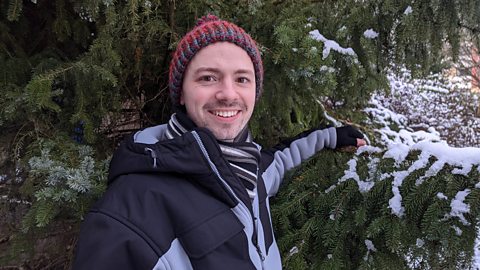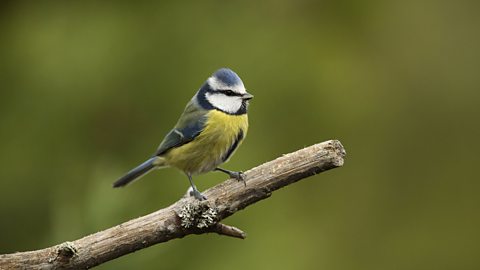Here at ±«Óătv Teach, we produce a series of curriculum-related Live Lessons, featuring teachers, experts and well-known ±«Óătv faces, to help bring schools and year groups together for some fun and interactive shared learning.
Ryan Smith (better known as Mr Smith to us) is a teacher at a primary school in Derbyshire and presents ±«Óătv Bitesize Daily and ±«Óătv Teach Live Lessons. He also regularly uses Live Lessons to support his own teaching. Here are his top tips for getting the most out of using our Live Lessons to help support your pupilsâ remote learning.


This is the story all about how
our teaching got flipped right upside down.
And Iâd like to take a minute
with you sat right there
to introduce Live Lessons and why you should careâŠ
If you rapped that as you read it to that well-known tune, then Will Smith and I salute you!
Here's why I think teachers should give Live Lessons a go and my tips for how to get the best out of them:

Tip 1: Help diminish the difference
Okay, so letâs say just over half your class had a decent home-schooling during the last lockdown, another tenth probably did nothing, another tenth went above and beyond and are now in the middle of a Mensa application, and the rest of your class had no choice in the matter because they were in school, following the curriculum by your side - but two metres apart, of course. Does that sound remotely familiar?
All of these scenarios of how our children continued - or didnât continue - their education over that tumultuous period have led to some significant differences in their curriculum coverage. So now school staff, whether they are back in the classroom or teaching via webcam, are faced with the challenge of having to close those gaps in learning across their cohort with many children working at home.
The same goes for home-schooling parents who, through no fault of their own, have suddenly found themselves having to get to grips with all the curriculum subjects, often across age groups - and all whilst still working from home themselves, running a household, avoiding a pandemic and trying to remember why they thought having kids was a good idea in the first place.
Buckle up, itâs going to be one hell of a ride. There is hope on the horizon, though.
For the past few years, ±«Óătv Teach has curated a series of curriculum-linked Live Lessons designed to be used in school and at home, often with supporting downloadable resources. Most recently, at the beginning of the academic year, ±«Óătv Teach broadened its scope to include studio based, pre-recorded, curriculum-aligned content for maths and literacy for Key Stages 1 and 2, which are perfect for helping to close the gaps in learning. Originally, the 20 studio lessons (ten KS1 and ten KS2) were released once a week, but now the whole series is available online to use as you please.
The studio-based lessons focus on the critical areas of maths and literacy that children are likely to have missed out on since the first lockdown began. They work to either introduce or remind pupils of these key subject areas and have âwork as you watchâ resources ready to go â which meansâŠyep, no real planning required! You can use them to help your pupils catch up with lost learning and bring your class to a unified standard.
These, along with new live âLive Lessonsâ (including a well-being lesson for bouncing back to class and a virtual school trip to Chester Zoo) have been an absolute saving grace in my classroom. Thereâs even a Big Schools Winterwatch Live Lesson hitting our screens on January 28th.
Tip 2: Recreate that 'whole school' experience
One of the things Iâve missed during lockdown when we haven't had all the kids in class is that whole school experience. But one of the things I love most about the Live Lessons is how theyâre able to bring schools and year groups together for fun and interactive shared learning. Even if your school is split across various âbubblesâ, or some children are accessing Live Lessons from home, they can all simultaneously join in and be part of the conversation, leading to a whole school experience.
At our school, weâve planned a whole school science day to revolve around The Big Schools Winterwatch Live Lesson on Thursday, 28th January, with special activities accessible to those in school and at home.
Tip 3: Enhance, not replace
Iâm not suggesting you watch all the Live Lessons at once! We watched one a week, spread over the whole autumn term, alongside new teaching and areas I wanted to develop. You can do as you please though: one a week, one every other day, a two-week intensive burst or even break them down into much smaller chunks â stopping the lessons as and when you need - thus allowing you opportunities to further develop upon the learning or to allow the children to pause for thought.
The question originally posed to me when asked to write this article was, âHow can teachers get the best out of the Live Lessons?â But to paraphrase President John F Kennedy, my response to all of you reading this is actually closer to, âHow can the Live Lessons get the best out of the teachers?â
You see, the purpose of these resources isnât to do the job for you. They're actually at their most useful when theyâre used to enhance, not replace, your teaching. As millions of families have recently found out, teaching isnât as easy as we make it look! Of course an online resource could never replicate the passion and skillset of an actual teacher, in an actual classroom, in front of actual, real life, 3D, blinking and breathing kids. Thank goodness! What they can do though, is assist in the rebuilding of that lost learning, by being the Robin to your Batman in the epic Battle of the Beleaguered Brains.
Tip 4: Use them as part of a bigger picture
As a teacher, Iâm grateful thereâs someone out there producing these Live Lessons at this level of quality. Weâre all juggling more tasks than ever, the pressure has never been higher and the futures of our newly branded âlockdown kidsâ have been placed firmly at our feet. So, I welcome with open arms an educational resource that will help release some of those pressures, whether utilised in the classroom or at home.
My class loved the Live Lessons, not only because they got to see the C±«Óătv host or teacher getting a cream pie to the face, but because they were fully engaged in the learning content too.
With the ever-changing situation regarding how children can access their learning, I find it really reassuring to know that Iâve got something I can turn to to help me provide for my class. These Live Lessons, along with the ever-dependable Bitesizeâs offering via Bitesize Daily and its revision guides, and the newly-announced educational content on C±«Óătv and ±«Óătv Two, are all part of a bigger picture of provision that will help us deliver an engaging, fun and educational learning environment in the classroom, online and at home.
Our next Live Lesson will broadcast live at 11am on Thursday, 28 January 2021. This cross-curricular programme in partnership with the RSPB and ±«Óătv Two's Winterwatch will allow Key Stage 2 pupils to experience the magic of nature in the winter from their classrooms or homes, and arm them with the necessary skills to go out and explore their local wildlife with the Big Schools Birdwatch. Click here for more information.

28 January: The Big Schools Winterwatch Live Lesson
Gather up, Winterwatchers! Take flight with a cross-curricular Live Lesson in partnership with Winterwatch and the RSPB.

Safer Internet Day - Live Lesson. video
In this Live Lesson in partnership with the UK Safer Internet Centre, aimed at primary-aged students and linked to the primary computing curriculum, we learn about how we can stay safe, responsible and wise in an increasingly digital world, with tips and advice from some of the biggest personalities on the web.

Where to catch our educational programming for primary pupils. document
Find out about our educational programmes for primary pupils, which are continuing to broadcast on the C±«Óătv channel.
